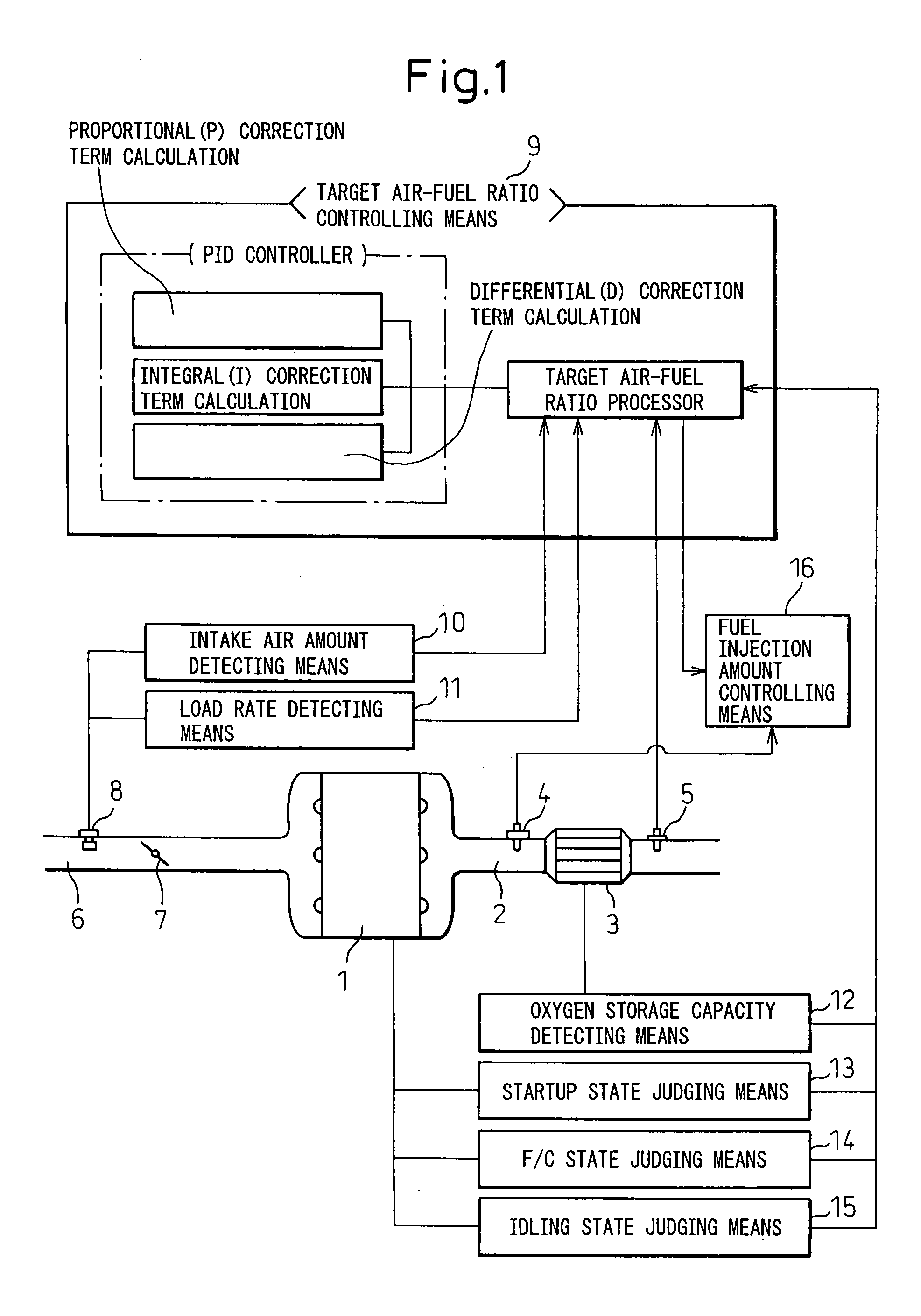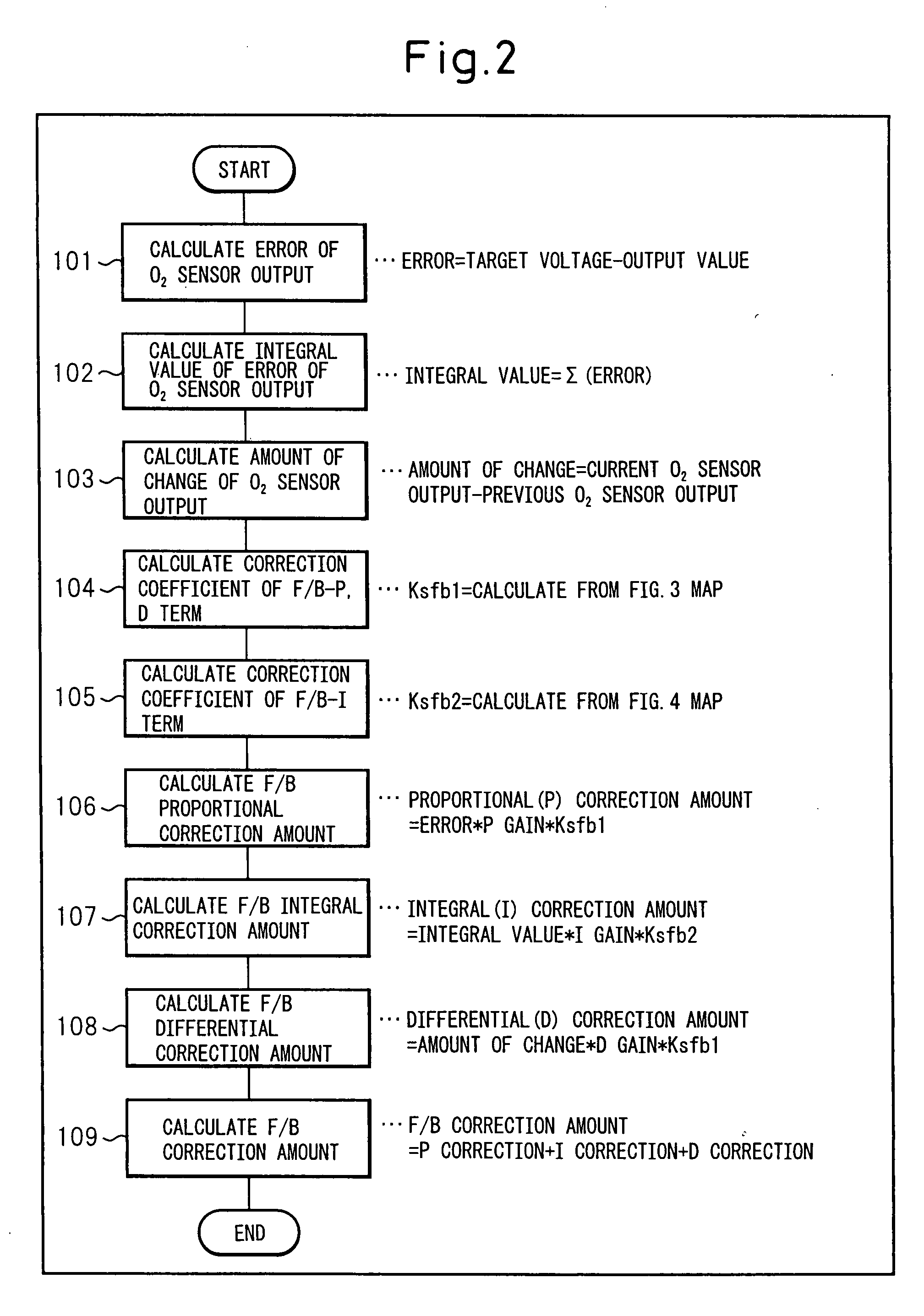Air-Fuel Ratio Control System of Internal Combustion Engine
a technology of air-fuel ratio and control system, which is applied in the direction of electrical control, process and machine control, instruments, etc., can solve the problem that the three-way catalyst atmosphere will easily end up greatly deviating from the purification window
- Summary
- Abstract
- Description
- Claims
- Application Information
AI Technical Summary
Benefits of technology
Problems solved by technology
Method used
Image
Examples
first embodiment
[0072]FIG. 2 is a flow chart showing a control routine of PID control calculating a correction amount of feedback control of a target air-fuel ratio of exhaust flowing into a three-way catalyst 3 as executed in the internal combustion engine shown in FIG. 1 to which the present air-fuel ratio control system is applied.
[0073]In the control routine shown in FIG. 2, first, based on the output information of the O2 sensor 5, the target air-fuel ratio processor calculates the O2 sensor output error, the integral value calculated by integrating that output error, and the amount of change of the O2 sensor output. Next, so as to make the correction amount per unit time of the oxygen storage amount of the three-way catalyst 3 constant even if the intake air amount changes, that is, so as to optimally control the amount of oxygen stored in the three-way catalyst 3 or the amount of oxygen released from the three-way catalyst 3 per unit time to be constant, the correction coefficients to be mul...
second embodiment
[0085]FIG. 5 is a flow chart showing a control routine of PID control calculating a correction amount of feedback control of a target air-fuel ratio of exhaust flowing into a three-way catalyst 3 as executed in the internal combustion engine shown in FIG. 1 to which the present air-fuel ratio control system is applied.
[0086]It is known that the maximum amount of oxygen which a three-way catalyst 3 can store, that is, the maximum oxygen storage amount, may deteriorate due to heat degradation of the three-way catalyst 3. Therefore, even if the target air-fuel ratio of the exhaust flowing into the three-way catalyst 3 is made the same target air-fuel ratio value and the intake air amount is the same, the greater the deterioration of the maximum oxygen storage amount of the three-way catalyst 3, the faster the allowable range of storage of oxygen in the three-way catalyst 3 will end up being reached and therefore the greater the possibility of the three-way catalyst atmosphere ending up...
third embodiment
[0113]Based on this, in the control routine of the third embodiment shown in FIG. 12, considering the effect of the engine speed in calculation of the correction amount of the integral correction term when processing for calculation of the correction amount of the integral correction term in feedback control of a target air-fuel ratio is executed by a processing routine synchronized with each fuel injection, a fourth correction coefficient set smaller the larger the engine speed is added as a parameter when calculating the integral correction amount in feedback control of the target air-fuel ratio. Due to this, it is possible to suppress the effect of the engine speed on control for making the correction amount per unit time of the oxygen storage amount of an exhaust purification catalyst having an oxygen storage capacity constant and possible to prevent deterioration of the exhaust emission.
[0114]Below, details of the steps will be explained.
[0115]First, at step 701, a target air-f...
PUM
 Login to View More
Login to View More Abstract
Description
Claims
Application Information
 Login to View More
Login to View More - R&D
- Intellectual Property
- Life Sciences
- Materials
- Tech Scout
- Unparalleled Data Quality
- Higher Quality Content
- 60% Fewer Hallucinations
Browse by: Latest US Patents, China's latest patents, Technical Efficacy Thesaurus, Application Domain, Technology Topic, Popular Technical Reports.
© 2025 PatSnap. All rights reserved.Legal|Privacy policy|Modern Slavery Act Transparency Statement|Sitemap|About US| Contact US: help@patsnap.com



